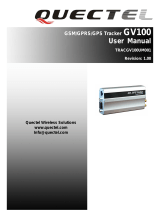Page 6 | Quadro GV100 Quick Start Guide
EN
05
SOFTWARE INSTALLATION
AND CONFIGURATION
Driver Installation
With the hardware installed, it is now time to install the
graphics driver.
1 Power up your computer, start Windows or Linux, and login
with an account that has Administrator rights.
Note: Since there is no GPU driver currently loaded, the
display may run at reduced resolution or image quality.
2 Download and install the driver.
•
Select and download the Optimal Driver for Enterprise
(ODE) from www.nvidia.com/drivers.
•
Set the 'Product Type' to Quadro, and use the various
drop down menus to select Quadro GV100 and your
Operating System.
•
Launch the downloaded executable file, then follow the
installer guides to complete installation.
The installer may require you to reboot your system once
the driver installation is complete.
Congratulations! Your NVIDIA Quadro
graphics card is now ready to use!









